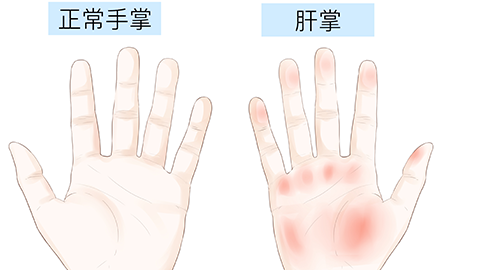What are the early symptoms of liver palms?
Generally, early symptoms of liver palms may include redness of the palms, spider angiomas, physical fatigue, decreased appetite, and jaundice. Detailed analysis is as follows:

1. Redness of the palms
The most typical symptom of liver palms is redness of the thenar and hypothenar eminences of the palm and the ventral side of the fingertips, with a color deeper than the normal skin tone. This occurs due to impaired liver function leading to elevated levels of estrogen in the body, which in turn causes capillary dilation. This redness becomes more noticeable when pressed firmly and returns to red once the pressure is released.
2. Spider angiomas
In the early stages, patients with liver palms may also develop spider angiomas, a condition characterized by idiopathic capillary dilation. Spider angiomas typically appear on the face, neck, and upper chest. They resemble a spider, with a central red dot surrounded by fine radiating blood vessels. The presence of spider angiomas also indicates impaired liver function.
3. Physical fatigue
In the early stages, liver palm patients often experience physical weakness, especially feeling particularly fatigued after mild activities. Patients generally show disinterest in participating in any activities and prefer to lie or sit still while resting. This is due to decreased liver function leading to weakened metabolic capacity and insufficient energy supply.
3. Decreased appetite
In the early stages, liver palm patients generally experience a loss of appetite. They often feel bloated and uncomfortable after meals. Many patients show no significant appetite when seeing food and may experience varying degrees of nausea, especially when faced with greasy foods. This is due to impaired liver function causing reduced bile secretion, which affects digestion and absorption of food.
4. Jaundice
For liver palms caused by liver damage, patients may also exhibit jaundice in the early stages. At this time, yellowing of the skin may appear around the eyes and eye sockets. As the disease progresses, this yellowing may manifest throughout the body. Jaundice results from impaired liver function leading to abnormal bilirubin metabolism.
Maintaining good lifestyle habits, such as quitting smoking, limiting alcohol consumption, eating a balanced diet, and staying in a good mood, can help prevent liver disease and maintain overall health.




